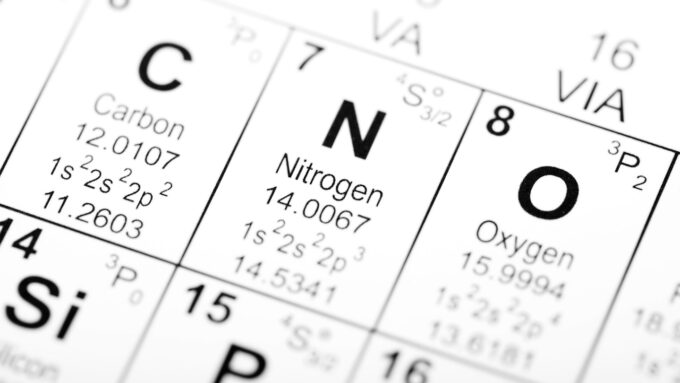Researchers may have just spotted the elusive, ephemeral nucleus of nitrogen-9 for the first time.
With seven protons and two neutrons, the lopsided atomic nucleus of nitrogen-9 pushes the limits of what can even be considered a nucleus at all. Yet signs of its existence seem to be lurking in years-old data from experiments seeking out a different unusual nucleus, researchers report in the Oct. 27 Physical Review Letters.
If follow-up studies can confirm the detection, nitrogen-9 will be the first nucleus spotted with five more protons than it can stably hold — until now, the limit was four.
“What are the limits of nuclear existence?” asks nuclear physicist Andreas Heinz of Chalmers University of Technology in Gothenburg, Sweden, who was not involved in the study. That’s what the study’s authors and physicists more generally are trying to understand, he says.
Protons and neutrons, the subatomic particles that make up atomic nuclei, are essentially glued together by the strong nuclear force (SN: 9/13/22). But the force can’t hold together nuclei that have wildly skewed ratios of protons to neutrons. Too many of either particle — especially protons, which repel each other due to their positive charge — and the nuclear bucket starts to overflow.
Beyond this overflow point, which physicists call the “drip line,” nuclei cannot fully bind their particles.
“People talk about the drip line as something like the end of the existence of nuclei,” says Marek Płoszajczak, a nuclear physicist at the Grand Accélérateur National d’Ions Lourds in Caen, France, who was not involved with the study.
But nuclei do exist beyond the drip line, if only ephemerally (SN: 11/15/21). To qualify as a nucleus, a handful of protons and neutrons need to hang out together for something like 10-22 seconds — a blink so brief that more of these moments fit in a second than seconds fit in the age of the universe. Though Heinz notes that’s a somewhat arbitrary definition based mainly on just one previous study.
Scientists searching for nuclei beyond the drip line are testing that definition. “We’re interested in how far you can go before you no longer can consider these things new nuclei,” says nuclear scientist Robert Charity of Washington University in St. Louis.
Finding a nucleus as far beyond the drip line as nitrogen-9 — five protons beyond — was surprising even for Charity’s team. Until now, scientists had only ever found isotopes up to four protons beyond the drip line.
The atoms of any given element each have a fixed number of protons. But the number of neutrons can vary, creating what are known as isotopes of that element (SN: 9/14/23). Charity and colleagues had been hunting for an isotope of oxygen, oxygen-11, by smashing high-powered beams of oxygen-13 nuclei into beryllium targets and measuring the decay products of short-lived nuclei produced in the collision.
Years after the experiment, Charity says, he noticed decay products in the data that looked like they should have crumbled away from nitrogen-9 nuclei. His theorist colleagues later confirmed that the decay products could really have come from the isotope. It lasts for about 10-21 seconds, or about 10 times as long as the minimum cutoff, Charity says.
The statistical strength of the evidence for nitrogen-9 falls right on the knife-edge of what scientists would consider a discovery. But the team really does have “strong evidence” for nitrogen-9, Heinz says. “For me, this sounds really convincing.” And, he says, the possible discovery should come as reassuring news to experimentalists looking for other isotopes beyond the drip line.
As for theorists? Płoszajczak says the new result should give them a “push” to improve their models of nuclei beyond the drip line, which are still rather limited. “These experiments show that the life of the nucleus extends far beyond the drip line.”
When it came to nitrogen-9, experiment beat theory to the punch. But better theories could make it possible to start looking for drippy nuclei on purpose, which would, in turn, make it easier to verify theories. When that happens, “we will start to have a kind of a discussion — a talk with nature,” Płoszajczak says. “Then, I think the whole field will explode. So we are just at the beginning.”






